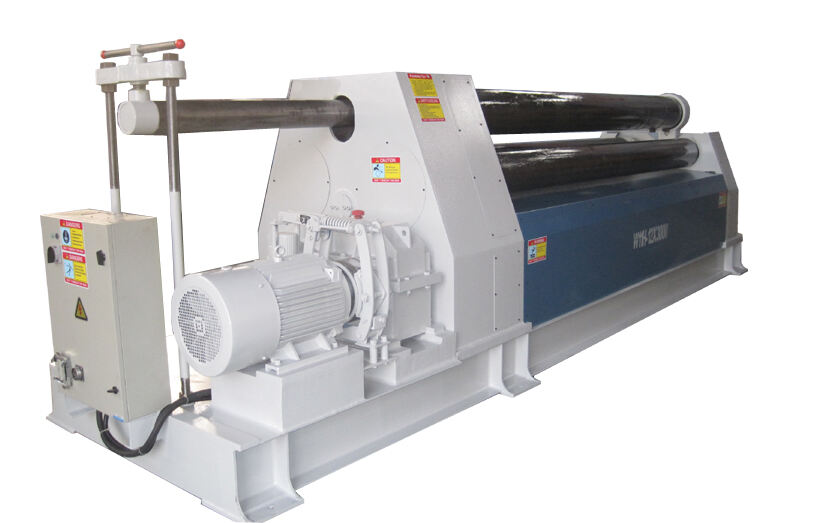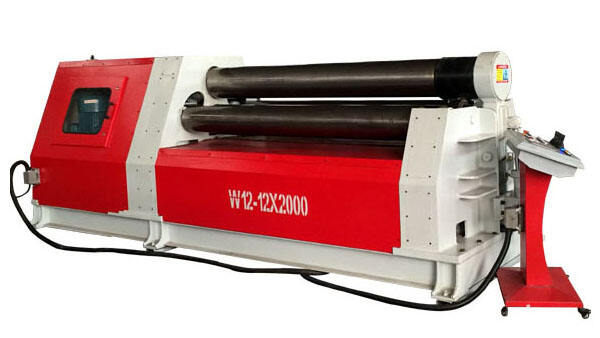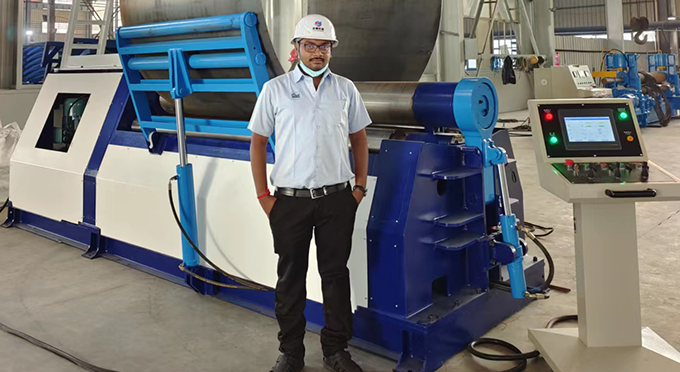The Fundamentals of Sheet Rolling Machines in Foil Production
Understanding the aluminum rolling process and its industrial significance
Rolling machines take raw aluminum sheets and compress them step by step until they become incredibly thin foils. This manufacturing process can cut the original thickness down by nearly 99%, all while making sure the metal grains line up properly. What results is material perfect for things like wrapping food products, which accounts for about 80% of all foil usage worldwide. The same process also makes components for lightweight electronic devices. Foil production works differently than when making plates for structural purposes. For foils, getting consistent material quality matters most. This becomes especially important in making cases for lithium-ion batteries, where manufacturers need to maintain thickness within just 5 microns or less. Recent research published in the Journal of Materials Processing Technology highlights how critical this precision has become for modern battery technology.
How sheet metal rolling machines work: An overview of mechanical principles
These machines employ a series of progressively tighter roller pairs, with forces reaching 25,000 kN in modern mills. A leading industry analysis highlights three core mechanisms:
- Backup Rollers: Prevent deflection in work rolls during high-pressure thinning
- Crown Control: Compensates for roll bending using hydraulic screw systems
- Tension Reels: Maintain consistent strip tension (±0.5% variance) during winding
Cold rolling dominates foil production (92% market share) due to its ability to achieve surface roughness values below 0.2 µm Ra—essential for printing and coating applications.
Function and design of rolling machines in high-precision foil production
Modern mills integrate adaptive crown control and AI-driven predictive maintenance systems. Key design innovations include:
- Tandem Rolling Modules: 4—7 stand configurations reducing thickness from 6mm to 0.006mm
- X-Ray Thickness Gauges: Real-time monitoring with 0.1µm resolution
- Anti-Stiction Roll Coatings: Nano-ceramic surfaces minimizing foil tearing
These advancements enable production speeds exceeding 2,500 m/min while maintaining ISO 2768-f precision standards. The shift to servo-electric gap control has reduced energy consumption by 18% compared to traditional hydraulic systems.
Cold Rolling: The Core Process for High-Quality Aluminum Foil
Why Cold Rolling Is Essential for Producing Thinner, Stronger Metal Products
The cold rolling process turns regular aluminum sheets into extremely thin foils through compression at normal temperatures. This technique not only refines the grain structure but can boost tensile strength somewhere around 20%. Hot rolling focuses more on making the metal workable, whereas cold rolling gives manufacturers much better control over final thickness and creates a smoother surface finish. These qualities are especially important when producing foil for medicine packaging or casing for lithium batteries where consistency matters. Cold rolling brings down the material thickness to under 0.2 mm without compromising strength, something material scientists have confirmed time and again when they compare products from both hot and cold rolling methods.
Precision Rolling for Thin Metal Sheets and Tight Tolerances
Advanced four-high mill designs achieve ±1 micron thickness consistency using hydraulic roll gap control and real-time monitoring. These systems maintain rolling forces between 1,200—2,500 kN and speed variations under 0.5%, enabling production of 6-micron foils with surface roughness below 0.8 µm Ra—meeting aerospace-grade EN 485 standards.
Over 90% of Commercial Aluminum Foil Undergoes Cold Rolling
The International Journal of Metalforming reports that cold rolling accounts for 92% of global aluminum foil production due to its superior surface finish and dimensional accuracy. It reduces porosity by 40% compared to hot rolling, making it ideal for hermetic seals and conductive applications.
Balancing Surface Finish and Roll Force in Cold Rolling Operations
Operators optimize roll forces between 15—25 MPa and rolling speeds of 600—1,200 m/min to prevent edge cracks. Automated oil-film lubrication systems reduce friction coefficients to 0.08—0.12, achieving mirror finishes (0.4 µm) without sacrificing throughput.
Achieving Micron-Level Thickness and Dimensional Accuracy
Rolling to Desired Thickness With Micron-Level Accuracy
Modern sheet rolling machines achieve thickness tolerances of ±1 micron through hydraulic gap control and real-time monitoring. This precision is vital for capacitor foils (6—15 microns) and flexible packaging laminates (5—20 microns). Recent developments in white light interferometry enable inline thickness verification during production, ensuring 99.8% consistency across long coil runs.
Aluminum Sheet and Foil Classification by Thickness
- Heavy gauge: 0.25—6.35 mm (structural components)
- Standard foil: 0.006—0.2 mm (food packaging)
- Ultra-thin foil: <6 microns (lithium-ion battery current collectors)
Thickness Specifications for Aluminum Foil in Packaging and Electronics
Pharmaceutical blister packs require 20—25 micron foil for moisture barrier performance, while lithium battery separators demand 6—8 micron foils with less than 0.5% thickness variation. Aerospace-grade radiation shields use 4—5 micron foils, achievable only through multi-stage cold rolling processes.
How Rolling Improves Aluminum Surface Characteristics
Controlled compression reduces surface roughness (Ra) from 1.2 µm to as low as 0.15 µm, creating uniform grain structures that enhance corrosion resistance by 40% compared to cast aluminum, per 2023 materials engineering studies.
Types of Sheet Rolling Machines and Their Role in Modern Foil Manufacturing
Four-high and cluster mills: Advancing precision in thin strip materials
Four high mills have those dual backup rolls that keep the smaller work rolls stable, which allows for really precise control even when dealing with forces above 4,000 kN. The whole arrangement helps reduce bending so they can maintain about plus or minus 0.005 mm accuracy on those thin 0.2 mm aluminum strips. Then there are cluster mills that take things further by adding extra support rolls. These setups manage to get down to 0.01 mm consistency with copper nickel alloys, something that's actually pretty important for making those flexible circuit boards we see everywhere these days.
Tandem rolling lines for continuous production of aluminum foil and sheets
Multi-stand tandem systems process 2,500 mm-wide coils into 0.006 mm foil at speeds up to 1,200 m/min. Modern lines integrate 10—15 rolling passes with inline annealing, reducing material handling by 40% compared to single-stand setups. These systems maintain less than 0.5% thickness variation across coils longer than 5 kilometers.
Evolution from single stands to automated rolling systems in metalworking
Automation has reduced manual interventions from 12% to just 1.5% of processing time in leading facilities (2024 Material Handling Report). CNC-controlled roll gaps combined with AI-driven thermal compensation adapt dynamically to changes in metal flow stress. Laser-based thickness monitoring now detects 99.8% of defects prior to slitting.
Innovations in Rolling Technology for Advanced Foil Applications
Rolling of specialty alloys and thin strip materials for aerospace and medical use
Today's rolling equipment handles some pretty sophisticated metal mixtures like titanium nickel combinations and those special aluminum lithium blends, creating thin sheets that stand up well to heat and maintain great strength while being lightweight. We find these materials all over the place actually they're crucial for blocking radiation in medical gear and making parts that can survive extreme temperatures inside jet engines. Take aircraft construction for instance. The aluminum lithium stuff going into fuselage panels needs really fine control during rolling processes, something around half a micrometer accuracy or better just so the material doesn't lose its ability to withstand repeated stress cycles without breaking down.
Innovations in roll camber control and tension leveling for defect reduction
Advanced crown adjustment systems maintain even pressure distribution across the roll face, cutting edge wave defects by 40—60%. Closed-loop tension control with adaptive leveling algorithms ensures consistent properties throughout ultra-thin foil runs—especially crucial in battery foil manufacturing, where variations beyond 0.2 µm can impair energy storage efficiency.
AI-driven monitoring systems enhancing consistency in foil manufacturing
Machine learning algorithms analyze data from over 15 sensor types to predict roll wear with 92% accuracy (Metals Processing Institute 2023). These AI systems enable proactive maintenance, reducing unplanned downtime by 35% in continuous operations. Studies show AI-optimized parameters improve thickness consistency by 18% compared to manual calibration.
FAQ Section
What is the primary purpose of cold rolling in aluminum foil production?
Cold rolling is used to compress aluminum sheets into thin foils at normal temperatures. It achieves high strength and smooth finishes crucial for applications like medicine packaging and lithium batteries.
What are tandem rolling modules?
Tandem rolling modules are configurations with multiple stands (4-7) that reduce sheet thickness effectively, from 6mm to 0.006mm, allowing for high-speed foil production.
How do AI-driven monitoring systems benefit foil manufacturing?
AI systems enhance consistency by analyzing sensor data, predicting roll wear, and enabling proactive maintenance, thereby reducing downtime and improving product precision.
What is the significance of tension reels in rolling machines?
Tension reels help maintain consistent strip tension with minimal variance during the winding process, critical for achieving uniform thickness and surface quality in foil production.
Table of Contents
- The Fundamentals of Sheet Rolling Machines in Foil Production
- Cold Rolling: The Core Process for High-Quality Aluminum Foil
- Achieving Micron-Level Thickness and Dimensional Accuracy
- Types of Sheet Rolling Machines and Their Role in Modern Foil Manufacturing
- Innovations in Rolling Technology for Advanced Foil Applications
- FAQ Section




